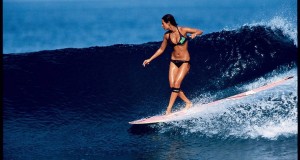
Dancers and practitioners of yoga tend to notice when their bodies feel out of alignment. They are people who tend to be in touch with their bodies. I can lay claim to such a self-awareness myself, having been a dancer most of my life. When a year ago, I felt that my body was all knotted up in a way I couldn’t fix with yoga, I first tried acupuncture. When that didn’t work, some of my friends put me in touch with a new entry for body and spine alignment in the world of stress therapy. It is an incredibly intense kind of deep tissue massage and body realignment therapy called Rolfing that is all set to become the next wonder kid of new-age therapies formerly limited to treatments like Reiki and acupuncture.
This method of body and spine alignment certainly has its share of superstar endorsements (Oprah being one of them). It certainly isn’t new though – people first heard of this in the sports movie with Burt Reynolds from 1977 called Semi-Tough. Among those with whom yoga seems all been-there-done-that, the intenseness of the pain and the feeling of rightness involved in Rolfing is certainly drawing a fanatic following. The blogosphere is all abuzz with it.
Rolfing is a method developed by Ida Rolf, the famous American biochemist. The method she developed tries to achieve its ends on the premise that most of the body’s pain comes from incorrect body and spine alignment. In her theory, gravity and the body’s responses are what are responsible for the poor alignment seen in our muscles, the spine, the bones and connective tissue.
Rolfing therapy can get very aggressive and very painful. If this seems not very different from what the chiropractors do, rolfing involves the aggressive manipulation of the connective tissue (otherwise known in the lingo as the fascia) as opposed to the bones and the muscle that the chiropractors deal in. It has to be aggressive because the connective tissue can be really tough to manipulate. Spinal alignment isn’t the only benefit to this either. Patients report benefits to their blood pressure, and a drop in their body weight. Rolfing can achieve over a couple of sittings what yoga, physical therapy or anything else rarely achieve.
And yet, rolfing is seen not as an entirely new kind of treatment. Rather, it is an extension of other alignment techniques like yoga. A rolfing practitioner kneads your connecting tissue nearly to breaking point. Being flexible is just something you should be doing for yourself. That in rolfing, you have done for you.

Source by Ethan Sims
 Vitamin Agent The Health & Naturalistic Source
Vitamin Agent The Health & Naturalistic Source



